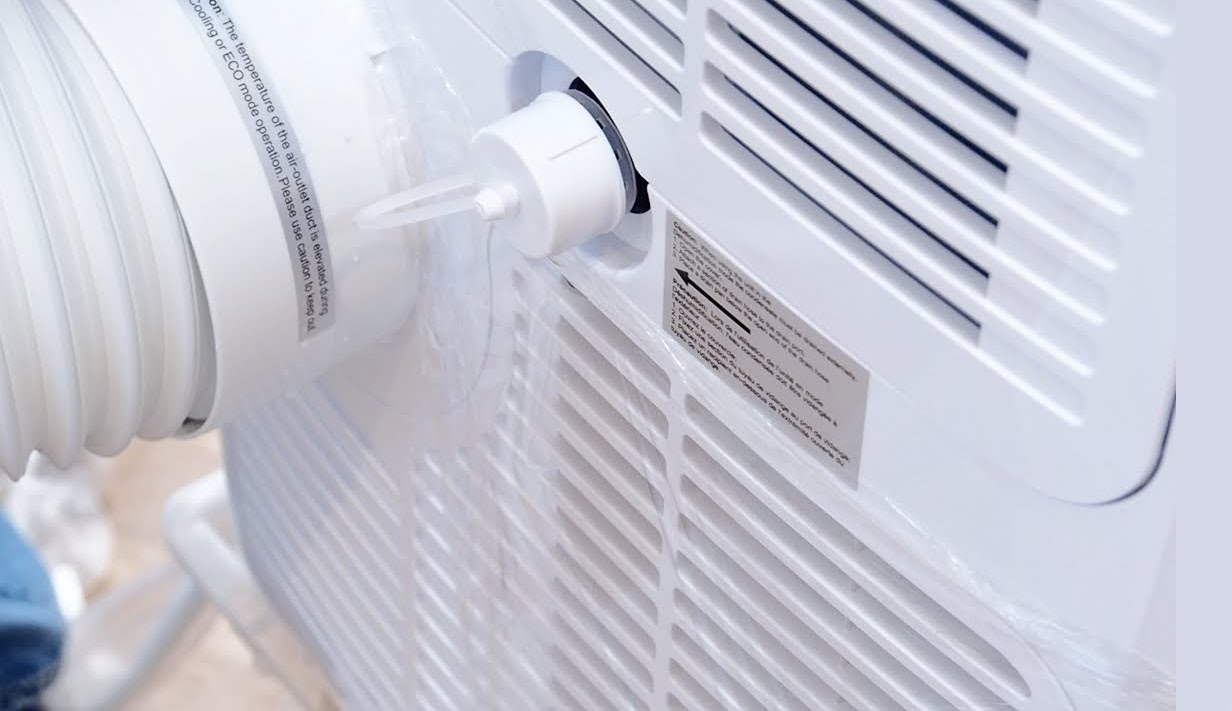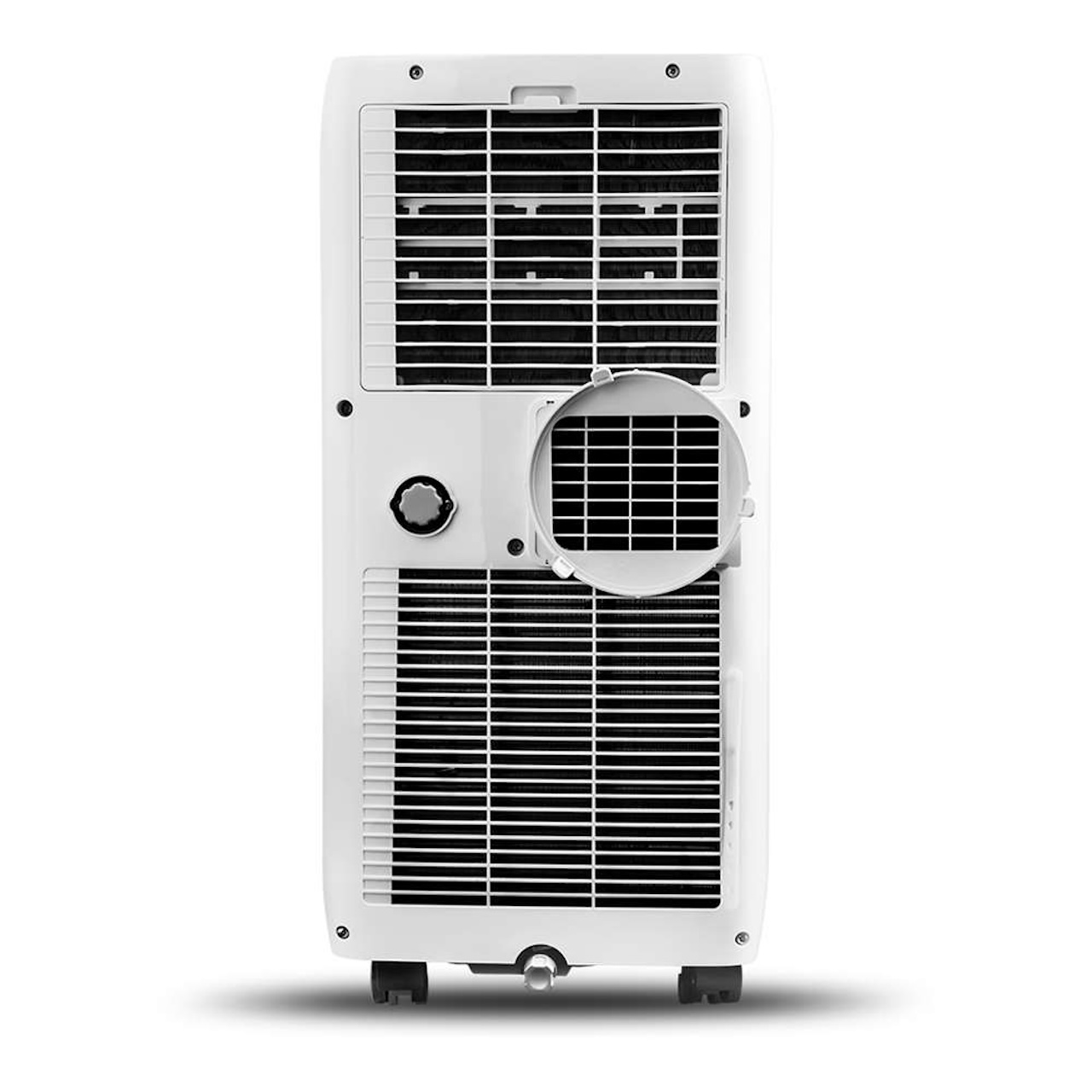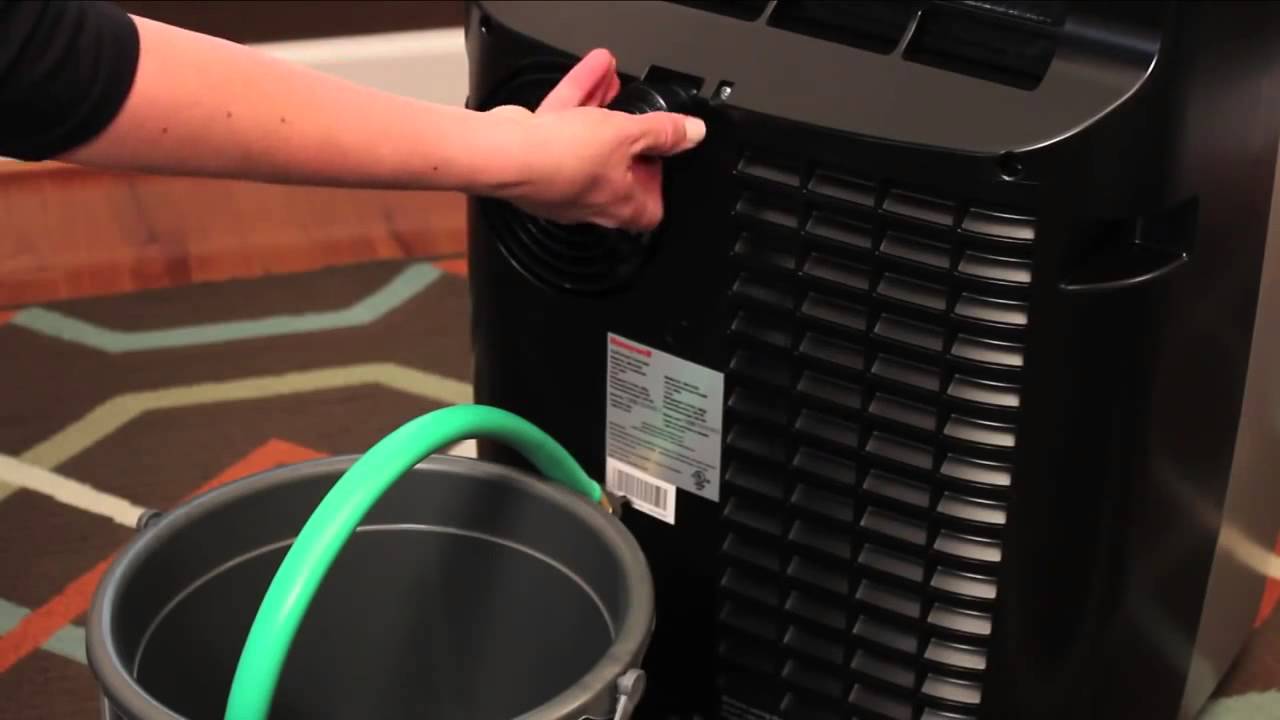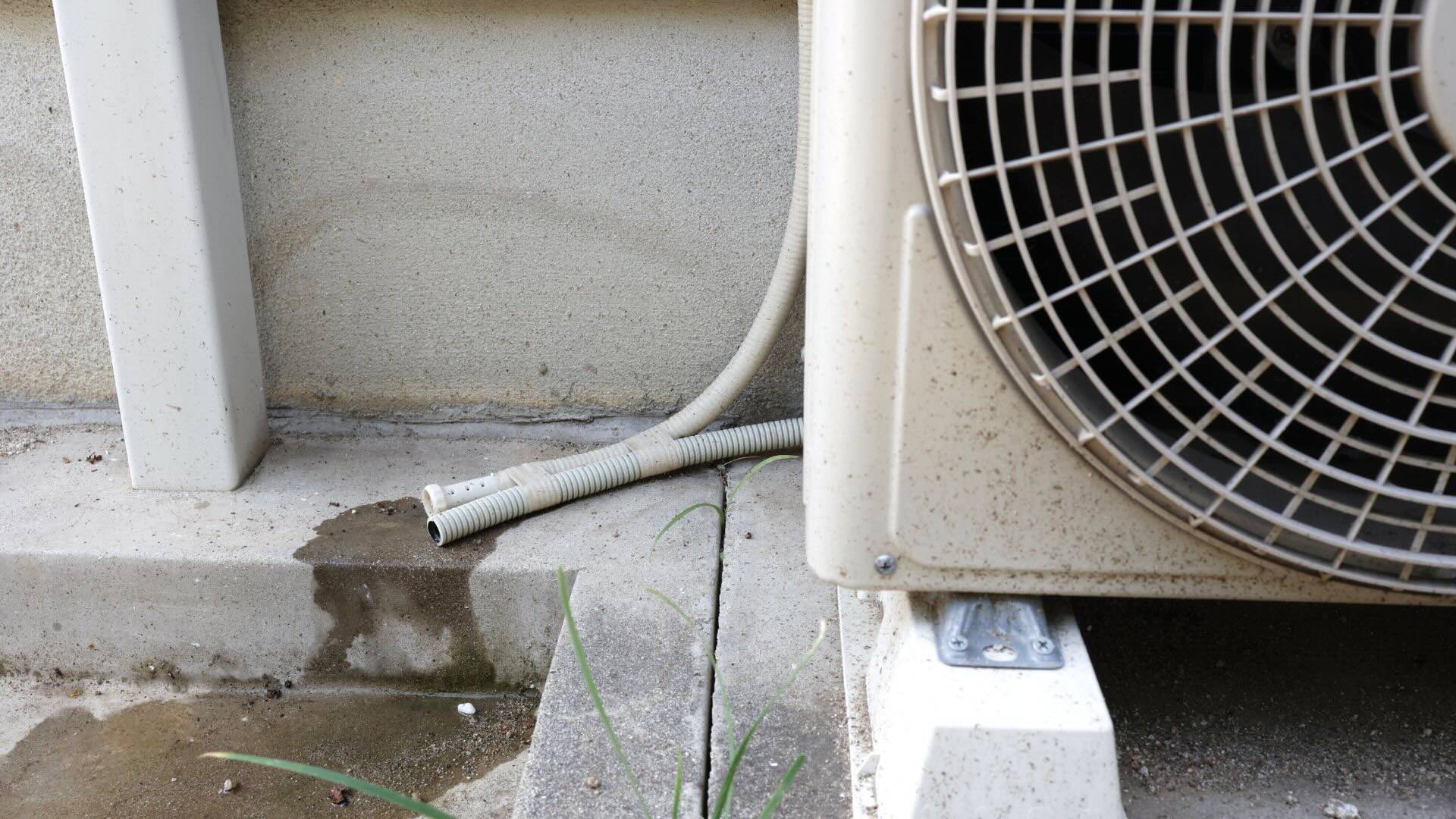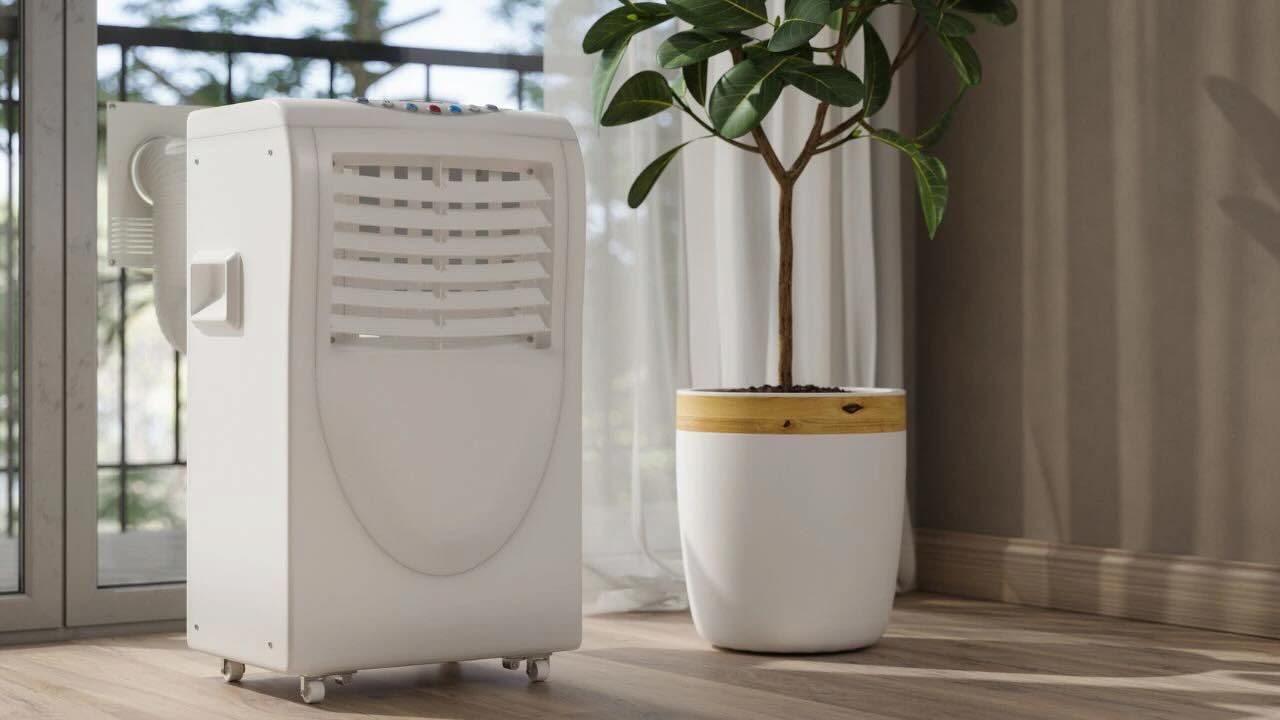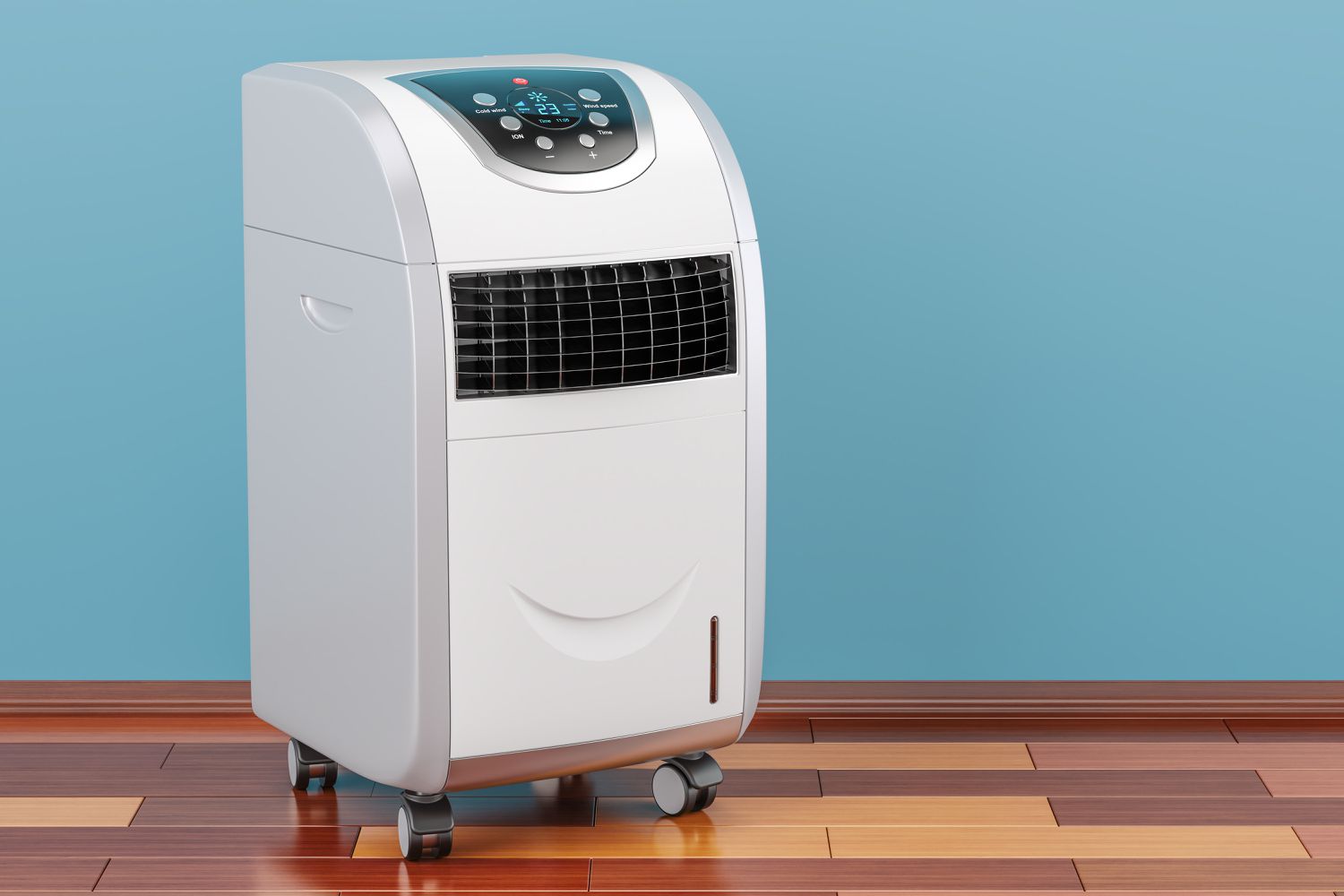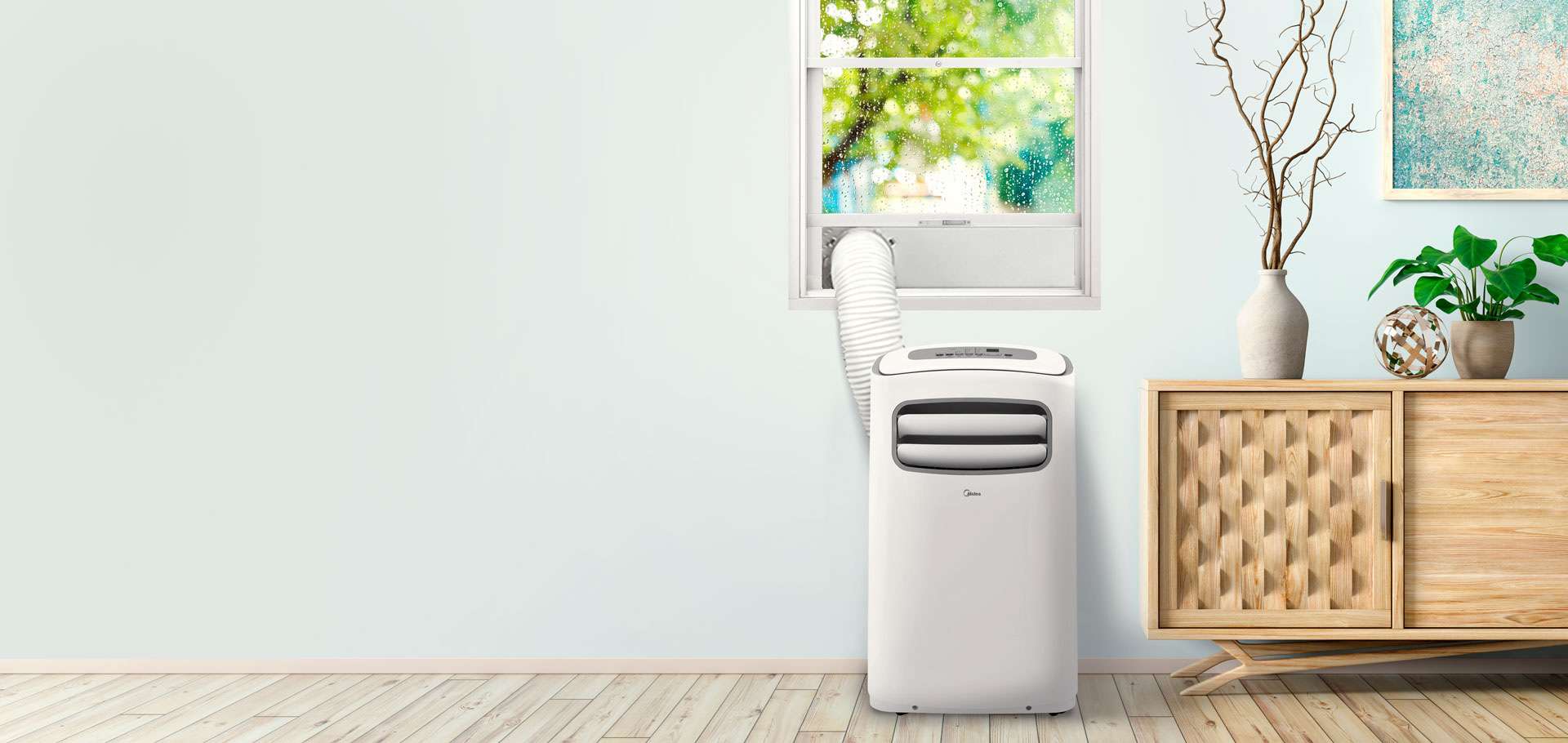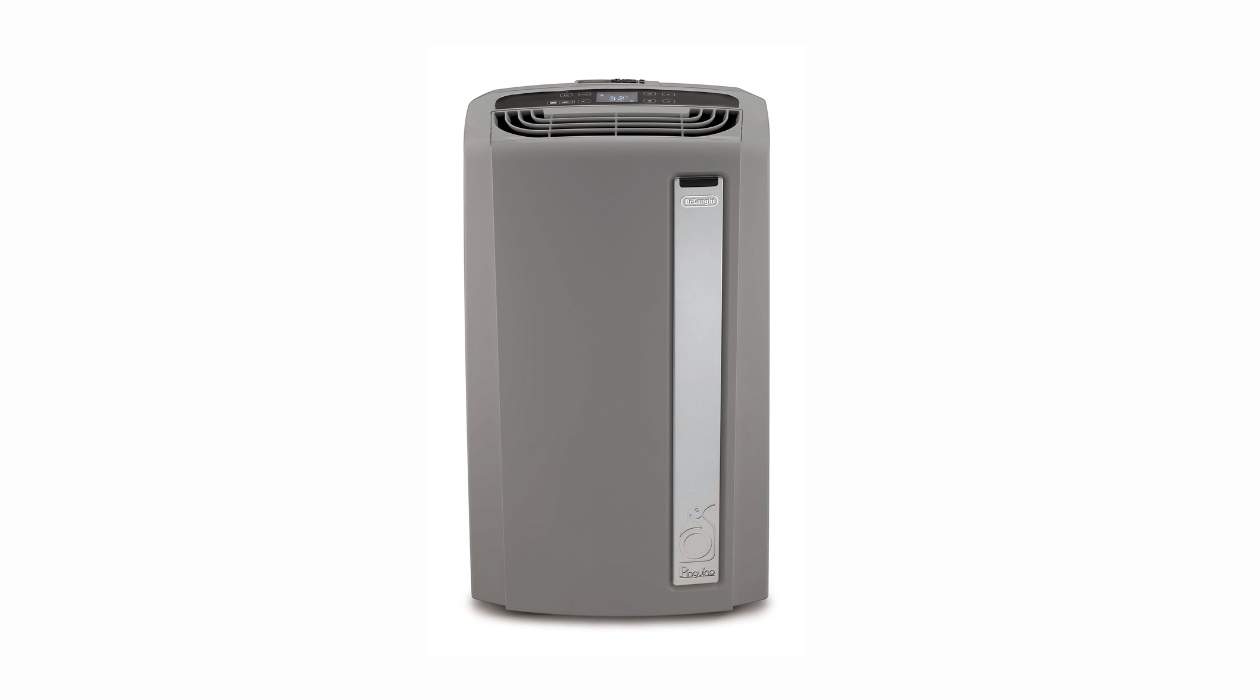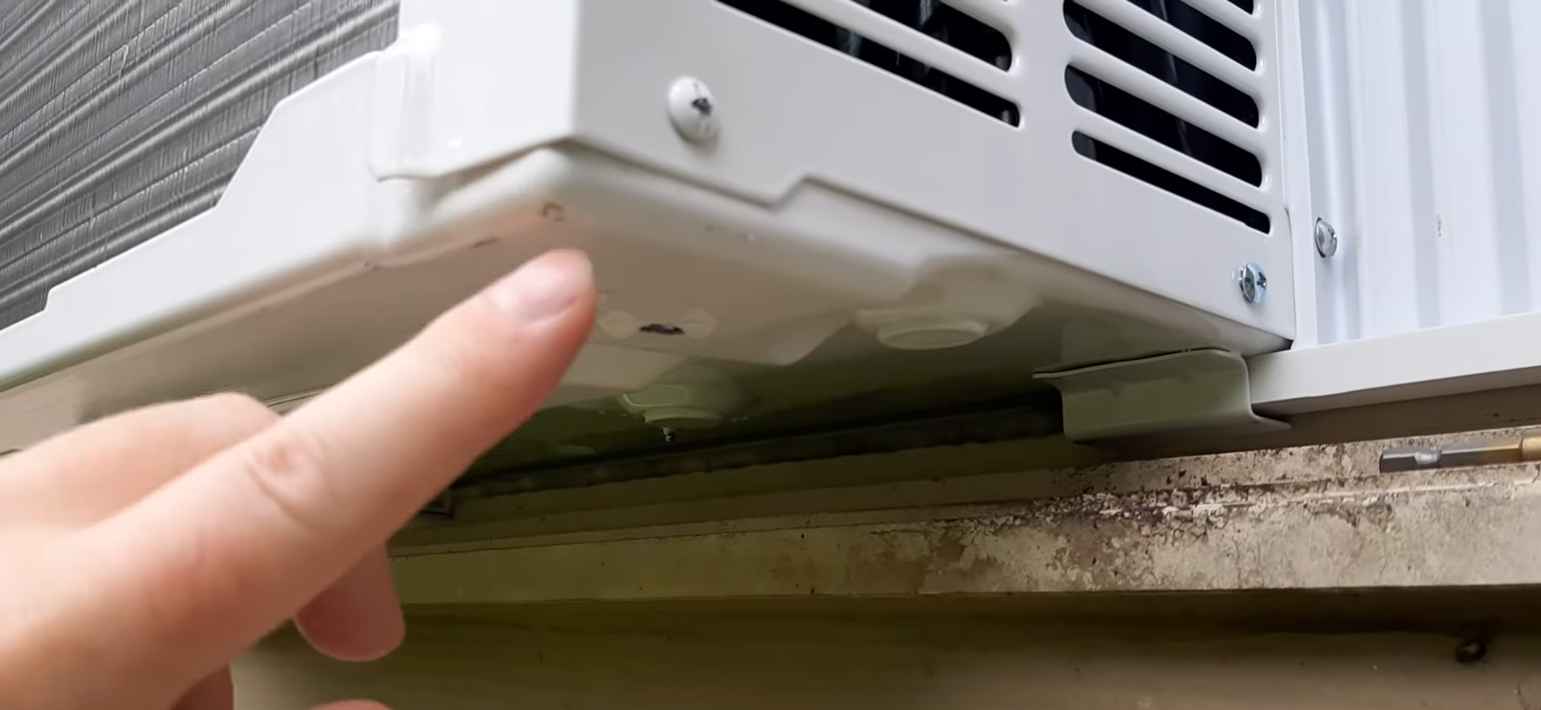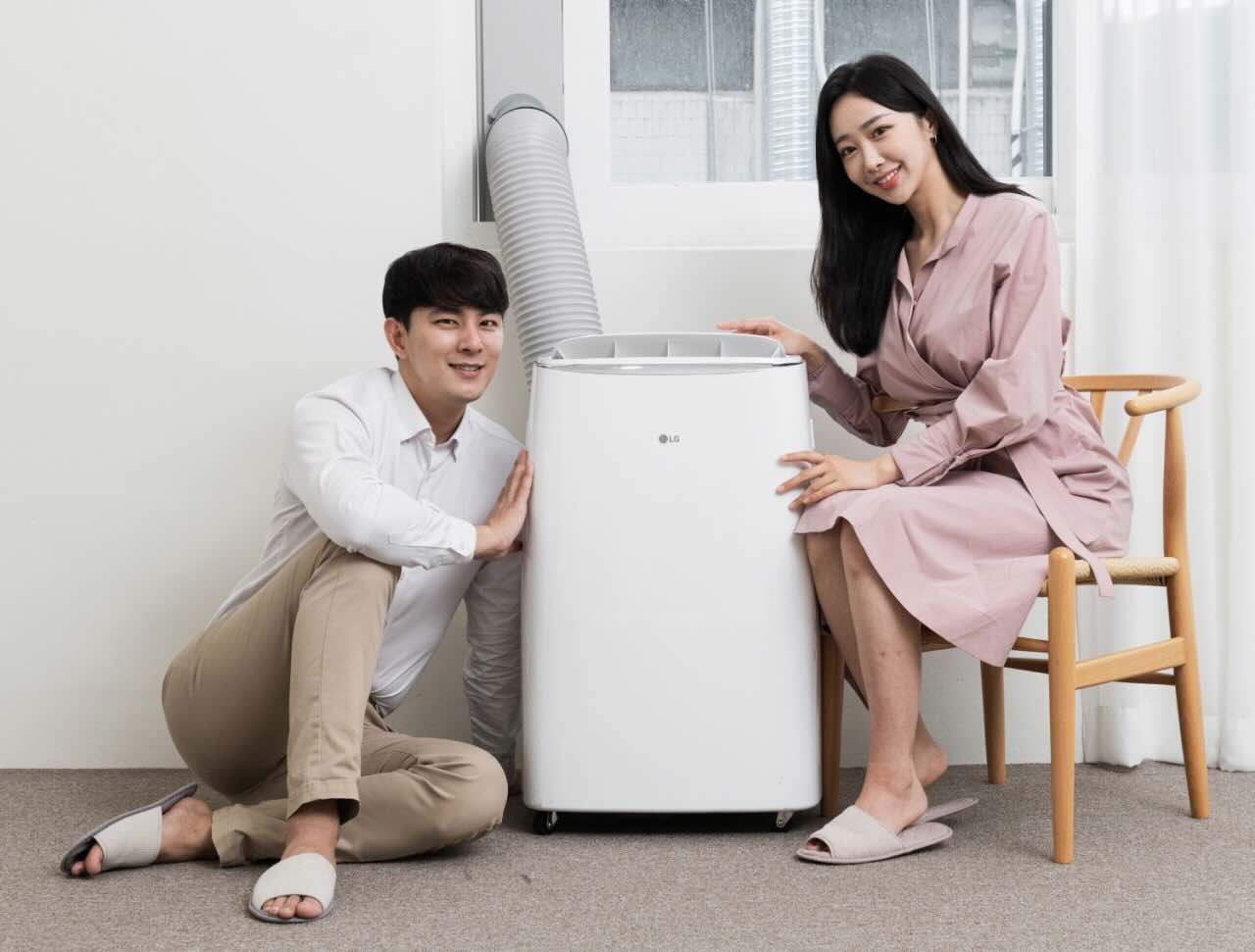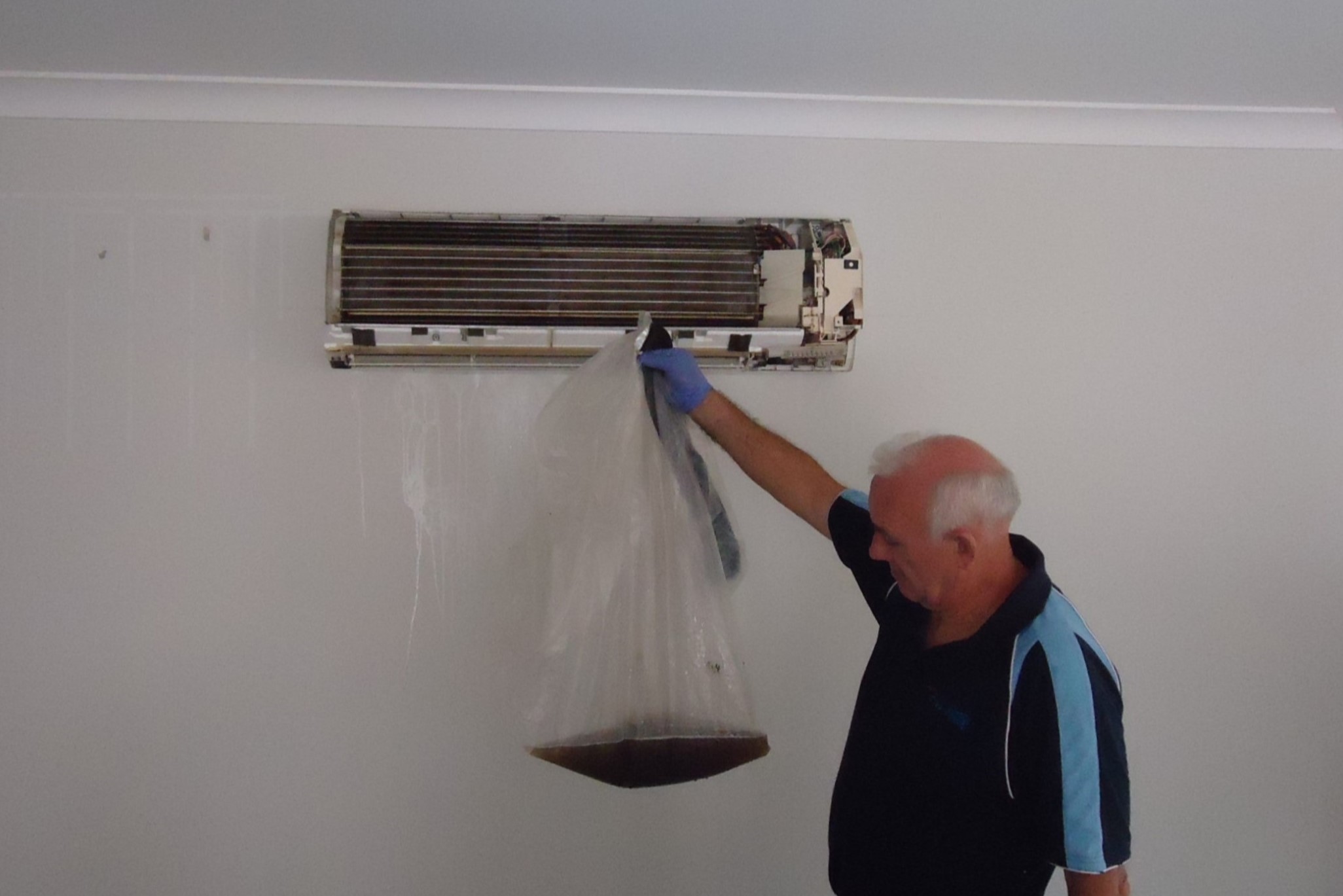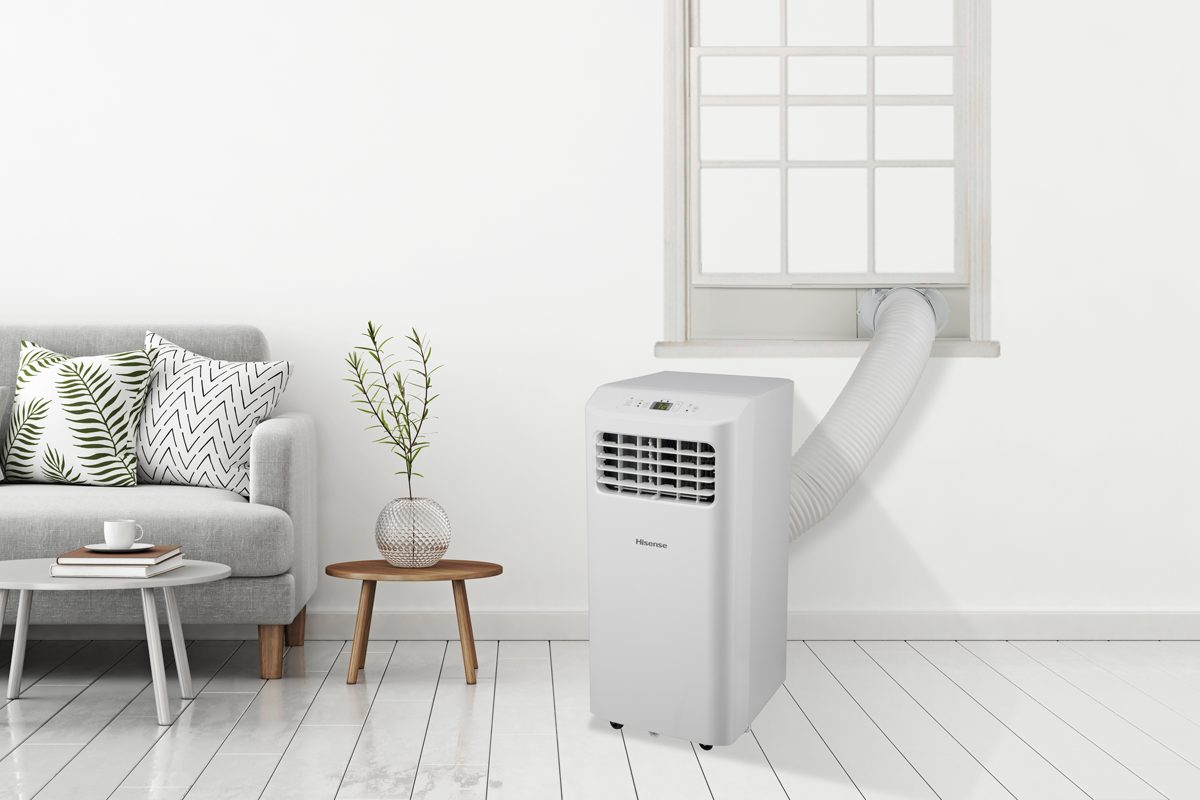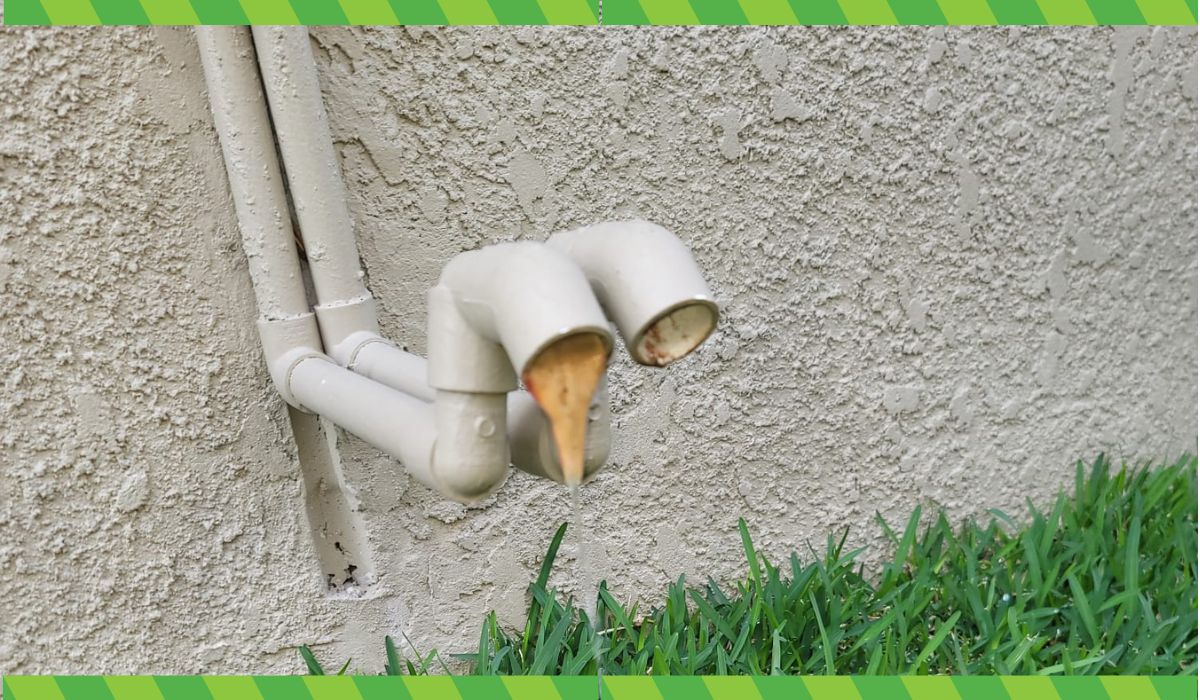Home>Home Maintenance>How To Drain A DeLonghi Portable Air Conditioner
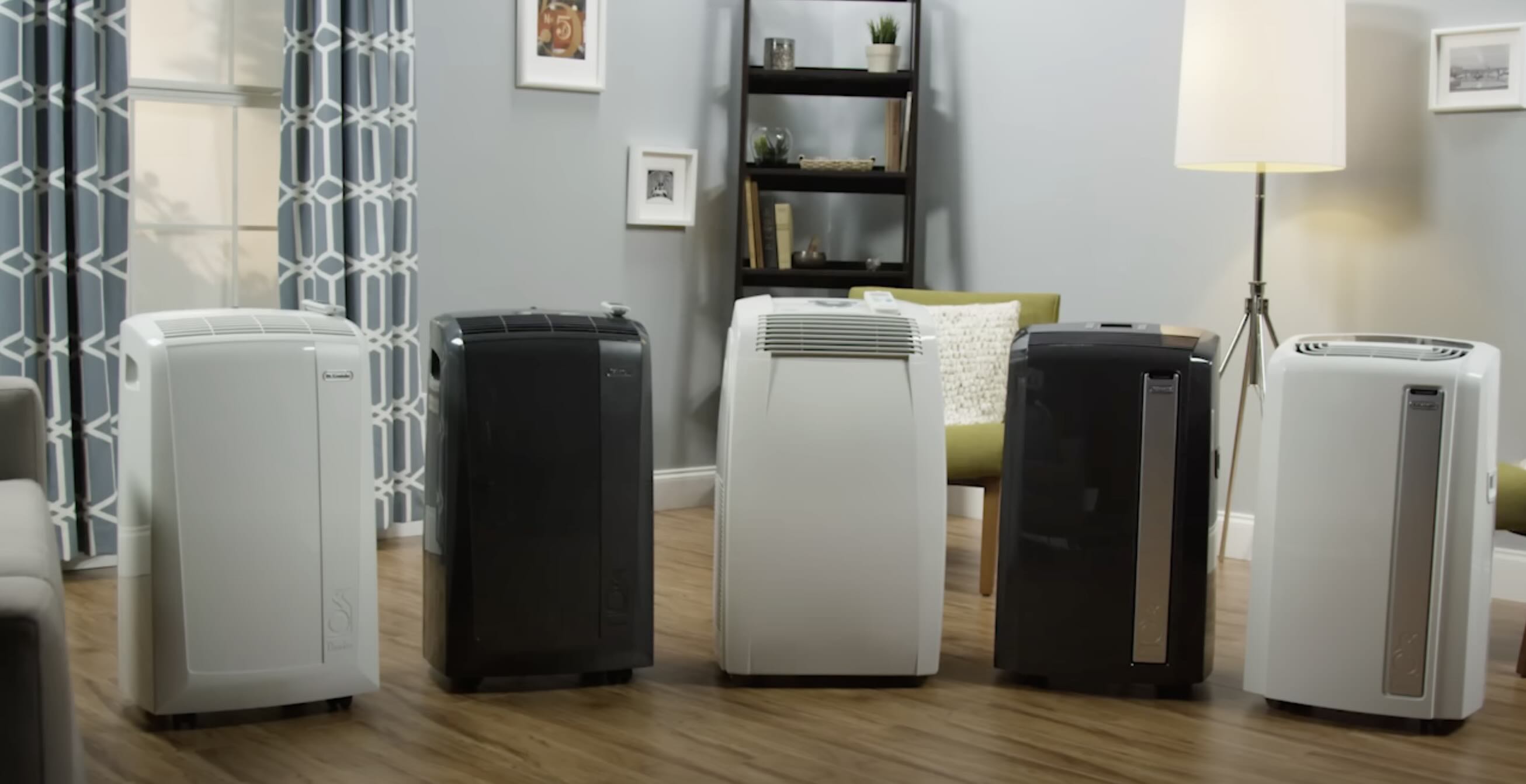

Home Maintenance
How To Drain A DeLonghi Portable Air Conditioner
Modified: March 7, 2024
Learn how to drain your DeLonghi portable air conditioner with these simple home maintenance tips. Keep your unit running smoothly and efficiently.
(Many of the links in this article redirect to a specific reviewed product. Your purchase of these products through affiliate links helps to generate commission for Storables.com, at no extra cost. Learn more)
Introduction
Welcome to this comprehensive guide on how to drain a DeLonghi portable air conditioner. As the summer months roll in, having a portable air conditioner can be a lifesaver, especially in areas where the temperature soars. These compact units offer convenient cooling solutions for homes, offices, or any space that needs to beat the heat.
However, like any appliance, portable air conditioners require regular maintenance to ensure optimal performance and longevity. One crucial aspect of maintenance is properly draining the unit to remove excess condensation. Failure to drain the unit can lead to water leakage, reduced cooling efficiency, and even potential damage to the air conditioner.
In this guide, we will take you through a step-by-step process on how to drain a DeLonghi portable air conditioner effectively. By following these instructions, you can keep your unit running smoothly and ensure a comfortable environment for yourself and others.
Before we dive into the steps, it is essential to emphasize safety precautions. Always refer to the manufacturer’s instructions and guidelines specific to your DeLonghi portable air conditioner model. Additionally, ensure that you have the necessary tools and materials on hand to complete the drainage process.
Remember, if you feel uncomfortable or unsure at any point, it is best to contact a professional air conditioning technician who can assist you with the task.
Key Takeaways:
- Regularly draining and maintaining your DeLonghi portable air conditioner is crucial to prevent water leakage, maintain optimal cooling efficiency, and ensure the durability of your unit. Proper drainage helps keep your air conditioner in excellent working condition.
- Safety should always be a top priority when performing maintenance tasks. Familiarize yourself with the manufacturer’s instructions, wear protective gear, and seek professional assistance if unsure. By following safety precautions, you can enjoy a cool and comfortable living or working space throughout the summer months.
Safety Precautions
When dealing with any electrical appliance, including a DeLonghi portable air conditioner, it is crucial to prioritize safety. Before proceeding with the drainage process, make sure to follow these safety precautions:
- Turn off and unplug the unit: Before attempting any maintenance tasks, including draining the air conditioner, ensure that it is turned off and unplugged from the power source. This prevents the risk of electric shock.
- Allow the unit to cool down: Portable air conditioners generate heat while running. To avoid burns or other injuries, allow the unit to cool down completely before proceeding with the drainage process.
- Wear protective gear: While it may seem like a simple task, draining an air conditioner can involve contact with water and potential debris. It is advisable to wear protective gloves and safety goggles to keep yourself safe from any splashes, leaks, or sharp edges.
- Keep the area well-ventilated: Ensure that the room or space where the air conditioner is located is adequately ventilated. This helps prevent the accumulation of moisture, mold, or any unpleasant odors during the drainage process.
- Work on a flat and stable surface: To maintain stability and prevent accidents, place the air conditioner on a flat and stable surface. This helps prevent it from tipping over or causing any unnecessary strain while performing the drainage process.
- Read the manufacturer’s instructions: Every model of a DeLonghi portable air conditioner may have specific instructions and guidelines related to drainage. Familiarize yourself with these instructions before proceeding with the drainage process to ensure you are following the recommended steps.
- Do not force any parts: When working with the air conditioner, avoid using excessive force or tampering with any components. If you encounter any difficulties or uncertain steps during the drainage process, consult the manufacturer’s instructions or seek professional assistance.
By adhering to these safety precautions, you can minimize the risk of accidents, injuries, or damage to the air conditioner. Now that we have covered the safety measures, let’s move on to the step-by-step process of draining a DeLonghi portable air conditioner.
Step 1: Familiarize Yourself with the Unit
Before you begin the drainage process, it’s important to familiarize yourself with your DeLonghi portable air conditioner. Take some time to locate and identify the various components and features of the unit.
Start by locating the control panel. On most DeLonghi models, the control panel is located on the top or front of the air conditioner. The control panel allows you to adjust the temperature, fan speed, and other settings.
Next, locate the air intake and exhaust vents. The air intake vent draws in warm air from the room, which is then cooled and recirculated back into the room through the exhaust vents. Identifying these vents will help you better understand the airflow of the unit.
Find the drainage port. This is where the excess condensation will be drained from the unit. The drainage port is typically located at the rear or bottom of the air conditioner. It may be covered by a cap or plug, which needs to be removed for the drainage process.
Take note of the manufacturer’s instructions and any specific guidelines related to your model. Different DeLonghi portable air conditioner models may vary slightly in terms of components and features. Understanding the unique specifications of your unit will give you a better grasp of the drainage process.
By familiarizing yourself with your DeLonghi portable air conditioner, you will have a better understanding of the different parts involved in the drainage process. This knowledge will make it easier for you to proceed with the subsequent steps in draining your unit effectively.
Step 2: Locate the Drainage Port
Once you are familiar with your DeLonghi portable air conditioner, it’s time to locate the drainage port. The drainage port is where the excess condensation from the air conditioner will be expelled.
The location of the drainage port may vary depending on the model of your DeLonghi portable air conditioner. In most cases, the drainage port is located at the rear or bottom of the unit.
Inspect the back of the air conditioner and look for a small opening or slot. This is where the drainage port is usually situated. It may be covered by a cap or plug to prevent any water leakage.
If you are unsure about the exact location of the drainage port, refer to the manufacturer’s instructions or the user manual that came with your unit. These resources will provide specific details and illustrations to help you locate the drainage port.
Once you have identified the drainage port, take note of its size and shape. This will be important when selecting the appropriate drainage system or hose to connect to the unit.
Locating the drainage port is an essential step in the process of draining your DeLonghi portable air conditioner. Having a clear understanding of its location will enable you to proceed with the subsequent steps smoothly and efficiently.
Step 3: Prepare the Drainage System
Now that you have located the drainage port, it’s time to prepare the drainage system for your DeLonghi portable air conditioner. This involves gathering the necessary tools and materials to facilitate the drainage process.
Here are the items you will need to prepare:
- Drainage hose: The drainage hose is essential for directing the water from the air conditioner to a suitable drainage point. Ensure that the hose is long enough to reach your desired drainage location. Measure the distance from the air conditioner to the drain or outdoor area where you plan to discharge the water.
- Adjustable clamp or zip ties: You will need an adjustable clamp or zip ties to secure the drainage hose firmly in place. This ensures that the hose remains attached to the drainage port during operation.
- Bucket or container: If you are unable to drain the water directly outside, you will need a bucket or container to collect the water from the air conditioner. Make sure the bucket or container has enough capacity to hold the expected amount of water.
- Towel or absorbent mat: It’s a good idea to have a towel or absorbent mat ready to catch any potential drips or spills during the drainage process. This helps keep the surrounding area clean and prevents water damage.
- Protective gloves: Wear protective gloves to keep your hands safe from any water splashes or potential contaminants during the drainage process.
- Safety goggles: Safety goggles provide eye protection, especially if you need to flush out or clean the drainage system. They prevent any debris or water particles from coming into contact with your eyes.
By gathering these tools and materials, you will be fully prepared to proceed with the drainage process. Having everything on hand saves time and ensures a smoother experience.
With the drainage system prepared, you are now ready to move on to the next step: connecting the drainage hose to the DeLonghi portable air conditioner.
Step 4: Connect the Drainage Hose
With the drainage system prepared, it’s time to connect the drainage hose to your DeLonghi portable air conditioner. The drainage hose is responsible for directing the excess condensation from the unit to a suitable drainage point.
Follow these steps to connect the drainage hose:
- Remove the cap or plug: If your air conditioner’s drainage port is covered by a cap or plug, carefully remove it by twisting or pulling it off. Set the cap or plug aside for safekeeping in case you need to reseal the drainage port later.
- Insert one end of the drainage hose: Take one end of the drainage hose and gently insert it into the drainage port of the air conditioner. Ensure a secure fit, but avoid forcing the hose into the unit.
- Secure the hose with an adjustable clamp or zip tie: Once the hose is inserted into the drainage port, use an adjustable clamp or zip tie to secure it in place. Ensure that the clamp or zip tie is tight enough to hold the hose securely, but be careful not to overtighten and damage the hose or the unit.
- Position the other end of the hose: Determine the desired drainage point for the water to be expelled. This can be a drain, a sink, a bucket, or even outdoors. Position the other end of the drainage hose accordingly.
Make sure the drainage hose is positioned in a way that allows for a smooth flow of water without any kinks or blockages. It should have a gradual downward slope to facilitate proper drainage.
Once the drainage hose is properly connected and positioned, double-check that all connections are secure and free from any leaks. This ensures that the water will be effectively directed out of the air conditioner.
By following these steps, you have successfully connected the drainage hose to your DeLonghi portable air conditioner. Now, it’s time to move on to the next step: positioning the drainage hose.
To drain a DeLonghi portable air conditioner, locate the drain plug at the bottom of the unit and remove it. Place a shallow pan or bowl underneath to catch the water. Once the water has drained, replace the plug securely.
Step 5: Position the Drainage Hose
After connecting the drainage hose to your DeLonghi portable air conditioner, it’s important to properly position the hose to facilitate the smooth flow of water. The correct positioning ensures that the excess condensation is directed away from the unit and efficiently drained.
Follow these steps to position the drainage hose effectively:
- Avoid any kinks or sharp bends: Ensure that the drainage hose is free from any kinks or sharp bends that can obstruct the flow of water. A straight or gently curving hose is ideal for a continuous and unobstructed drainage process.
- Keep the hose downward sloping: The drainage hose should have a downward slope from the air conditioner to the drainage point. This slope allows gravity to assist in the drainage process. Proper positioning with a downward slope helps prevent the buildup of water in the hose and ensures a smooth flow of condensation.
- Avoid submerging the hose: Ensure that the end of the drainage hose is not submerged in water or any other liquid. Submerging the hose can cause backflow or blockages, hindering the proper drainage of the air conditioner.
- Use support or elevation if needed: If the drainage point is higher than the air conditioner, you may need to use a support or elevate the hose to maintain the downward slope. This can be done by placing the hose on a stable surface or using a hose support device.
- Secure the hose in place: Use clips, hooks, or tape to secure the drainage hose to nearby surfaces or walls. This helps prevent accidental movement or dislodging of the hose, ensuring a steady flow of condensation.
Take a moment to inspect the overall positioning of the drainage hose and make any necessary adjustments. Ensure that the hose is stable, free from obstructions, and securely connected to both the air conditioner and the drainage point.
Properly positioning the drainage hose is crucial for efficient water removal from your DeLonghi portable air conditioner. It allows for a smooth and uninterrupted drainage process, minimizing the risk of water leakage or damage to the unit.
With the drainage hose correctly positioned, you are ready to move on to the next step: testing for proper drainage.
Step 6: Test for Proper Drainage
After connecting and positioning the drainage hose, it’s important to test for proper drainage in your DeLonghi portable air conditioner. This step ensures that the excess condensation is being effectively removed from the unit.
Follow these steps to test for proper drainage:
- Turn on the air conditioner: Plug in and turn on your DeLonghi portable air conditioner. Set it to the desired cooling or dehumidifying mode.
- Monitor the drainage process: As the air conditioner operates, keep a close eye on the drainage hose and the drainage point. Observe if water is flowing smoothly through the hose and being expelled from the unit.
- Check for any leaks or blockages: Look for any signs of leaks along the drainage hose or connections. Make sure no water is pooling around the unit or in the surrounding area. Additionally, check for any blockages in the hose that may impede the flow of water.
- Listen for irregular sounds: Pay attention to any unusual noises coming from the air conditioner. Unusual gurgling, bubbling, or gushing sounds may indicate an issue with the drainage system. If you notice any abnormal sounds, it’s best to consult a professional technician.
- Verify consistent drainage: Ensure that water is consistently being discharged through the drainage hose. If there are significant pauses in the drainage process or if water is not flowing consistently, there may be a clog or obstruction that needs to be addressed.
Performing these checks and tests allows you to verify that the drainage system is functioning correctly. Proper drainage ensures that the excess condensation is effectively removed, preventing water buildup inside the unit.
If you encounter any issues during the testing process, such as leaks, blockages, or irregular drainage, it’s recommended to consult the manufacturer’s instructions or seek assistance from a professional technician. They can help identify the cause of the problem and provide appropriate solutions.
By testing for proper drainage, you can ensure that your DeLonghi portable air conditioner is operating efficiently and effectively removing excess condensation.
Once you have verified the proper functioning of the drainage system, it’s time to move on to the next step: monitoring the drainage process.
Step 7: Monitor the Drainage Process
After testing for proper drainage in your DeLonghi portable air conditioner, it’s important to continue monitoring the drainage process to ensure its ongoing effectiveness. Regular monitoring helps identify any issues or potential problems that may arise.
Here are some steps to help you effectively monitor the drainage process:
- Regularly check the drainage point: Periodically inspect the drainage point to ensure that water is consistently being discharged. Make sure there are no blockages or obstructions preventing the smooth flow of condensation.
- Inspect the drainage hose: Check the drainage hose for any signs of leakage or damage. Ensure that it remains securely connected to both the air conditioner and the drainage point. If you notice any issues with the hose, address them promptly to avoid water damage or inefficiencies.
- Clear any blockages: If you notice a reduction in the flow of water or if the drainage system becomes clogged, take immediate action. Use a small brush or a pipe cleaner to gently clear any debris or blockages that may be obstructing the drainage system.
- Clean the drainage system regularly: Over time, the drainage system may accumulate dirt, dust, or mold. Clean the drainage port, hose, and any accessible parts of the system regularly to ensure uninterrupted drainage. Follow the manufacturer’s instructions or guidelines on how to clean and maintain the drainage system.
- Keep the surrounding area dry: It’s essential to maintain a dry environment around the air conditioner and the drainage point. Implement measures to prevent water from pooling or seeping into nearby surfaces, which can lead to water damage or mold growth.
- Monitor air conditioner performance: Pay attention to the overall performance of the air conditioner. If you notice a decrease in cooling efficiency or experience any unusual issues with the unit, it may indicate a drainage problem. In such cases, it’s best to consult a professional technician for further inspection and assistance.
By monitoring the drainage process, you can promptly address any issues and ensure continuous and effective removal of excess condensation. Regular maintenance and vigilance contribute to a properly functioning and efficient DeLonghi portable air conditioner.
Now that you understand the importance of monitoring the drainage process, it’s time to move on to the final step: cleaning and maintaining the drainage system.
Step 8: Clean and Maintain the Drainage System
Regular cleaning and maintenance of the drainage system in your DeLonghi portable air conditioner is essential to ensure its optimal performance and longevity. Over time, the system can accumulate dirt, debris, and even mold, which can hinder drainage and impact the overall functioning of the unit.
Follow these steps to clean and maintain the drainage system:
- Refer to the manufacturer’s instructions: Consult the user manual or manufacturer’s guidelines specific to your DeLonghi portable air conditioner model. Follow the recommended cleaning and maintenance procedures provided to ensure that you are following the correct steps.
- Turn off and unplug the unit: Before starting the cleaning process, always turn off and unplug the air conditioner from the power source. This ensures your safety and prevents any electrical mishaps during cleaning.
- Remove the drainage hose: Disconnect the drainage hose from both the air conditioner and the drainage point. Carefully remove any clamps or zip ties that hold the hose in place. Set the hose aside for cleaning.
- Clean the drainage port: Using a soft brush or cloth, gently clean the drainage port of the air conditioner. Remove any accumulated dirt, dust, or debris that may obstruct the drainage process. Avoid using harsh chemicals or abrasive materials that could damage the unit.
- Clean the drainage hose: Thoroughly clean the drainage hose by flushing it with a mixture of mild detergent and water. You can also use a pipe cleaner to remove any residue or blockages. Rinse the hose thoroughly and allow it to air dry before reattaching it to the unit.
- Inspect for mold or mildew: Mold or mildew can sometimes develop inside the drainage system, especially if there is excess moisture. Inspect the system for any signs of mold or mildew. If you find any, clean the affected areas with a mild bleach solution or a recommended mold cleaner, following the manufacturer’s instructions.
- Reattach the drainage hose: Once the drainage port and hose are clean and dry, reattach the drainage hose securely to both the air conditioner and the drainage point. Ensure that the connections are tight and free from any leaks.
- Perform regular maintenance: Set up a regular maintenance schedule to prevent future issues with the drainage system. This may include periodic cleaning, inspecting for blockages, and checking the overall condition of the system. Consult the manufacturer’s guidelines for recommended maintenance intervals.
By regularly cleaning and maintaining the drainage system, you can ensure that your DeLonghi portable air conditioner operates efficiently and effectively removes excess condensation. A clean and well-maintained system also helps prevent mold growth, unpleasant odors, and potential damage to the unit.
With the drainage system now clean and properly maintained, you have successfully completed the necessary steps to drain and maintain your DeLonghi portable air conditioner. By following these steps and conducting routine maintenance, you can enjoy cool and comfortable air while maximizing the lifespan of your appliance.
Remember to always refer to the manufacturer’s instructions and contact a professional technician if you encounter any issues or require further assistance.
Stay cool and enjoy the benefits of a well-functioning DeLonghi portable air conditioner!
Conclusion
Congratulations! You have reached the end of this comprehensive guide on how to drain a DeLonghi portable air conditioner. By following the step-by-step instructions and implementing the necessary safety precautions, you now have the knowledge and skills to effectively maintain and manage the drainage system of your air conditioner.
Regularly draining your DeLonghi portable air conditioner is crucial to prevent water leakage, maintain optimal cooling efficiency, and ensure the durability of your unit. By properly connecting the drainage hose, positioning it correctly, and monitoring the drainage process, you can prevent potential issues and keep your air conditioner in excellent working condition.
Don’t forget to regularly clean and maintain the drainage system to prevent blockages, mold, and unpleasant odors. Following the manufacturer’s guidelines and scheduling routine maintenance will help prolong the lifespan of your unit and ensure its continued efficiency.
Remember, safety should always be a top priority. Before attempting any maintenance tasks, make sure to familiarize yourself with the manufacturer’s instructions and guidelines specific to your DeLonghi portable air conditioner model. If you ever feel unsure or uncomfortable, it is best to seek the assistance of a professional technician.
By properly draining and maintaining your DeLonghi portable air conditioner, you can enjoy a cool and comfortable living or working space throughout the summer months. Stay cool and beat the heat with a well-functioning air conditioner.
Thank you for reading, and we hope this guide has been informative and helpful. Happy air conditioning!
Frequently Asked Questions about How To Drain A DeLonghi Portable Air Conditioner
Was this page helpful?
At Storables.com, we guarantee accurate and reliable information. Our content, validated by Expert Board Contributors, is crafted following stringent Editorial Policies. We're committed to providing you with well-researched, expert-backed insights for all your informational needs.
